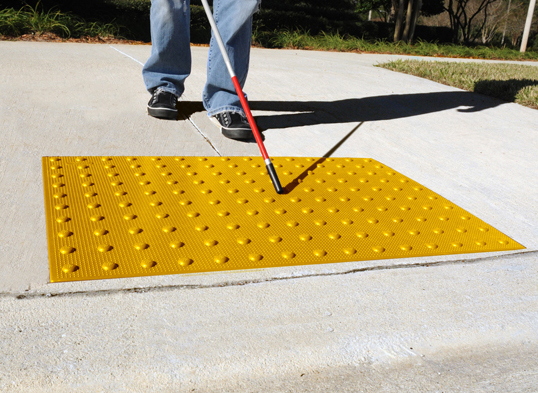How a simple design change is making Boston’s most iconic neighborhood accessible.
February 23, 2020

Ranked among the most popular tourist destinations in the US — Beacon Hill is the oldest and most iconic neighborhood in the city of Boston. This residential community is known for its historic landmarks, Victorian architecture, antique shops, cafes and restaurants. This three-quarter mile square area borders Beacon Street to the south., the Boston Commons and the Massachusettes State House, with its gold dome, are the prominent landmarks just across Beacon Street. Every year, thousands of people enjoy a stroll up and down the neighborhood sidewalks, except for one group – blind and low vision pedestrians have had the hardest time navigating these ‘historic’ sidewalks and street crossings. So why would one of the US most touristic neighborhood refuses to be accessible for pedestrians with physical challenges?
A lengthly legal battled ensued when Beacon Hill’s civic group refused to install pedestrian strips on street corners. Commonly known as ‘bump strips’ for their tactile patterns, pedestrian strips help warn individuals who a blind and visually impaired that they’re at a corner or street crossing. These tactile strips are common all over the world and are an important accessibility tool for all pedestrians. In 2014, the civic group sued the city of Boston in order to stop the installation of the pedestrian strips because the current design is historically inappropriate for Beacon Hill. It seemed that the durable plastic strips would affect the neighborhood’s charms and landscape.
So a simple, yet expensive design change was finally approved, and in 2019 the lengthly legal battle is finally over. Beacon Hill will have concrete and cast-iron pedestrian strips installed at 17 locations. Apparently the new design is more durable than the plastic ones that are in use around the city. However, this comes at a cost of $279 more per strip. So perhaps not all street crossing in Beacon Hill will be safe for person with physical challenges.
So what can we learn when in cases like this, a more universal design approach failed? What is it about the current design of bump strips that makes them less appealing in certain areas? Perhaps the product designer may include slight variations in the color, pattern, materials and installation process. Perhaps the civic group could have expanded the scope of their research, if they even did research at all with pedestrians. And since when does historical accuracy come before public safety and general accessibility. People with physical challenges are consumers, tourists and are part of the community.
